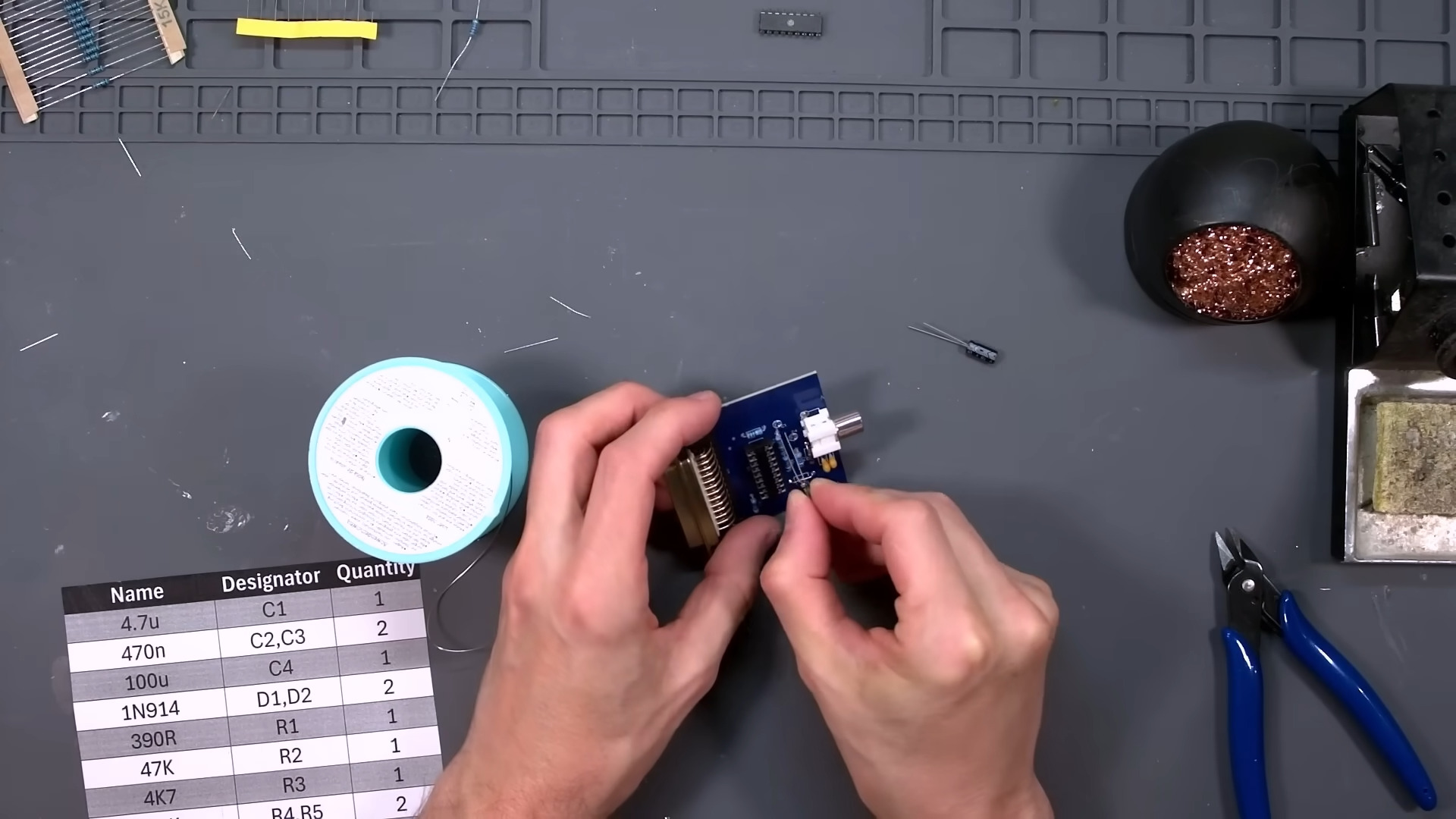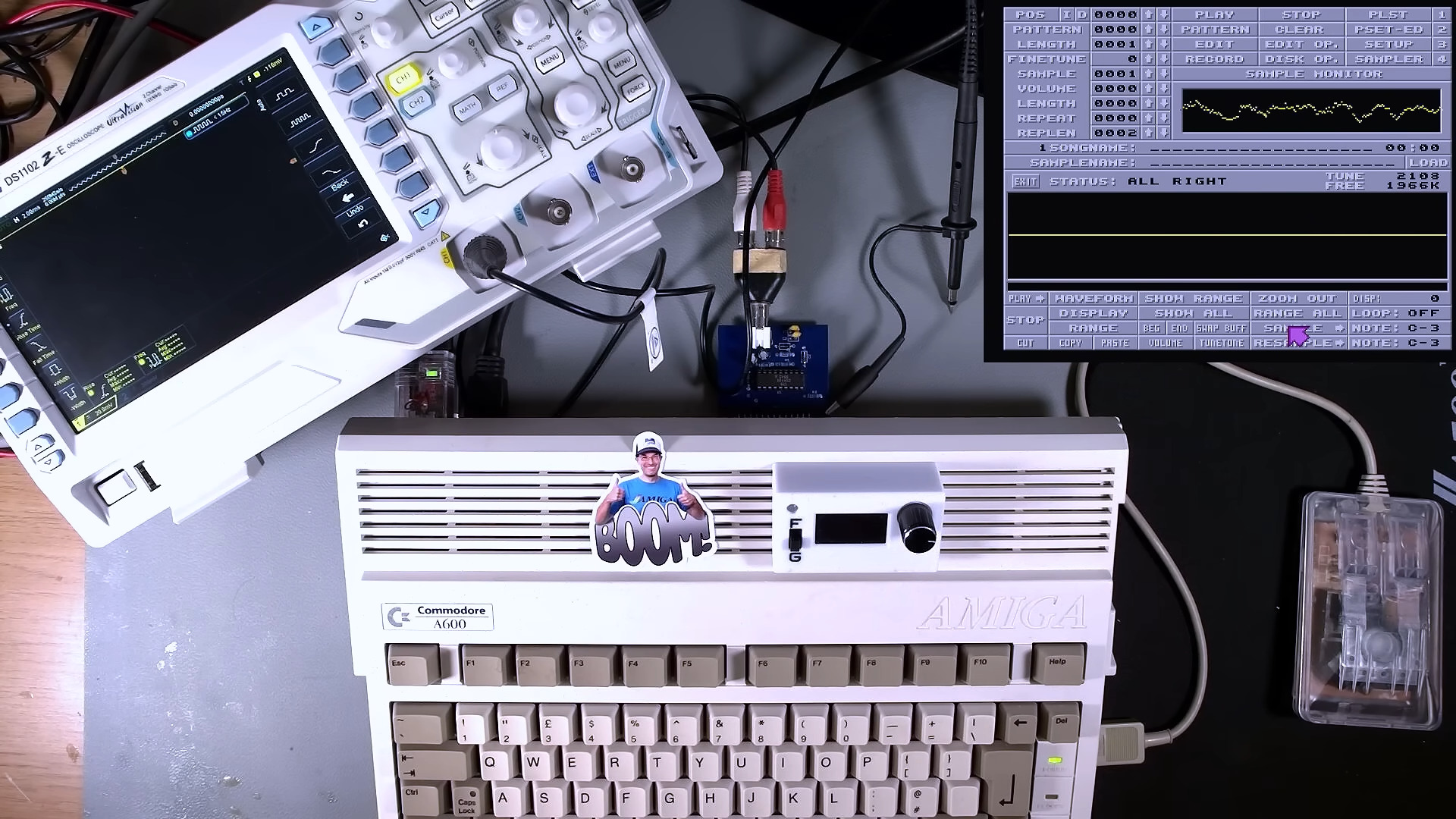DIY Amiga sound sampler circuit mystery solved 32 years later — Magazine instructions had key component spec typos
An electronics enthusiast remade a 1993 DIY project from his youth, but hard-earned skills and experience ironed out errors in the printed instructions.

A three-decade-old “Amiga mystery” has been solved by an intrepid electronics-focused TechTuber. Rob Smith originally tried to make a DIY sampler for his Amiga computer back in 1993. Despite his best efforts — carefully following a magazine-printed guide and reaching out to geeks at his local Maplin (Radio Shack) — he could never get the finished sampler to work. Now, 32 years later, with extensive experience on his side, he has returned to the project. Spoiler alert: he eventually found and quashed the mistakes in the CU Amiga Issue 039 step-by-step guide.
Smith explains that he was saving up for a pre-built sound-sampler expansion when he spotted the above-linked CU Amiga issue and the step-by-step guide to making your own ‘generic’ model. Typically, Amigans would use these to grab audio samples for developing games, demos, slideshows, and ProTracker (.MOD) compositions. The project appeals as it fused his computer and DIY electronics interests.
It must have been frustrating to work on this money-saving project and, after his best efforts, have it flop. Eventually, Smith threw the stuff away, as far as he remembers, but kept a hold of the key analog to digital converter (ADC) chip, as it was one of the most expensive components.
With this same component in hand, Smith decided to have another crack at the DIY Amiga sampler, this time with experience, and the huge resources of the internet behind him.
Following the magazine’s instructions precisely, in 2025, ended up with the same result as in 1993. An unresponsive device, which actually crashed the Amiga when it was summoned to do its business.

Tracking down the DIY tutorial errors
Having followed the CU Amiga Issue 039 printed tutorial with the utmost care, Smith found at least one glaring error quite quickly. He looked up CU Amiga Issue 040, and found that the Build Your Own Sampler Part 2 tutorial (for a stereo sampler) included a correction for the mono sampler in Issue 039!
Blaming a typo, CU Amiga 040 stated that “C1 should have been a 47uF capacitor.” The magazine printed a month prior has listed this component as “7uF.” Oops. A quick few pokes with the soldering iron and swapping the correct component into place rectified this error.
Get Tom's Hardware's best news and in-depth reviews, straight to your inbox.
However, correcting this component mismatch didn’t do the trick, so Smith had to investigate and tinker some more. Eventually, he discovered that the device clock signal, which should be ~30 KHz, was actually just 287 Hz.
Consulting with the ADC data sheet and making an educated extrapolated guess, Smith decided to swap out the clock-regulating capacitor from 470nF to 20pF. That’s a drastic reduction, but it did the trick. The capacitor change boosted the device clock to 1.6 MHz, and the DIY sampler started to work with classic Amiga sampler-aware tools like Audition 4 and ProTracker.
Sampler add-ons were popular with Amiga and ST computer owners
I, too, enjoyed sampling on one of my 16-bit era computer. However, I used the commercial Stereo Master cartridge and software package from Microdeal with an Atari STe (it was also available for Amiga). I think it was a £39 deal. Taking on a project like a DIY sampler would have meant quite a lot of expense on components, and electronics / soldering was not one of my hobbies at the time.
More from Rob Smith
Electronics enthusiast Rob Smith has starred in the pages of Tom’s Hardware before. Last time we shared his work, it was because of an Alien: Earth-inspired “fully working M314 Motion Tracker” he had developed.

Follow Tom's Hardware on Google News, or add us as a preferred source, to get our latest news, analysis, & reviews in your feeds.

Mark Tyson is a news editor at Tom's Hardware. He enjoys covering the full breadth of PC tech; from business and semiconductor design to products approaching the edge of reason.
-
Darkhands In the 80s, my Dad and I spent weeks on our Commodore 64 typing in a game (called Subway) from a C64 magazine, and despite being absolutely sure we had no typos, we could never get it to run. We similarly assumed the magazine must have had a typo of their own somewhere, but we never got it to work. Would love to track that magazine/game down again and get it working as well!Reply -
TollHolio Computes! Gazette, Issue 54. June 1988Reply
I had the dame problem with WordWriter. Never did get it to work.
Sure learned how to 10key with all the ML code entry though!


